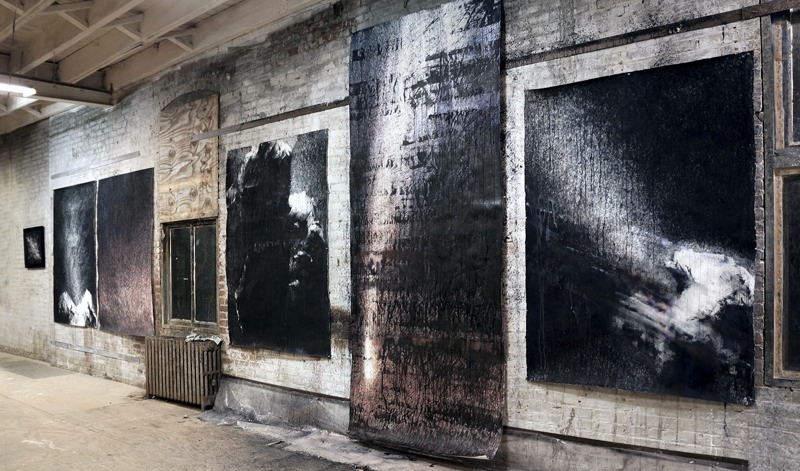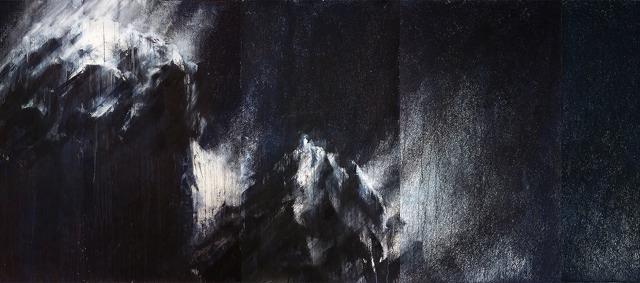Millions of people around the globe were enthralled when the European Space Agency’s Rosetta spacecraft successfully landed on Comet 67P/Churyumov-Gerasimenko in November 2014. Artist Ekaterina Smirnova was one of them — so much so that she has created an entire series of giant watercolour paintings inspired by the comet.
“It is unbelievably hard to land a robotic probe on a comet speeding through space far away, and yet we were able to do it,” she told Gizmodo via email. Her “67P” series seeks to capture the human urge to explore the universe in hopes of answering deeper questions about our place in the cosmos.
Smirnova comes by her interest in science naturally: her father is an engineer and encouraged her to indulge her curiosity, taking things apart to see how they worked. She brings this scientific mindset to her art. “Often when I approach other people’s artwork, my first thought is not about the aesthetics or emotional response, but rather, what was the process [by] which they made this piece,” she said.

Her own process for the 67P series was particularly intensive, and she describes it in detail, with photographs, on her blog. Not content with grinding her own pigments (as many artists are wont to do), Smirnova decided to make her own heavy water (containing D2O, deuterium oxide), with the same composition as the water found on comet 67P. It took a few tries, but eventually she succeeded with good old-fashioned electrolysis.
“It just takes time and a lot of electricity,” she admitted. “The simple way to get the desired level is to add a drop of pure D20 to a bucket of water, but electrolysis looks much more visually exciting.” In the end, she ordered pure heavy water by mail.

Smirnova admits that if you place two watercolor samples side by side, one using the distilled water and the other using regular tap water, they look pretty much the same. But that was never the point.
“By me doing the research, creating my own instruments, calculating, mixing, generating, creating, and then discussing it in detail with the viewer, this makes the project much richer,” she said. “I try to involve my audience in the process, introduce them to the scientific detail of my work, hoping that I would spark interest in science.”
Even her method of painting owes something to the comet. The splashing vapour technique she used in her 67P watercolor paintings is reminiscent of the vapour that forms a comet’s tail. Comets are icy, and when they get close to the sun, the conditions are so extreme that when the ice melts it skips the water phase entirely, producing a vapour. “The closest I could get to creating a chaotic stream of vapour was to splash paint on paper,” she said. “The stronger and faster I would splash, the finer the paint droplets would become.”
You can see more of Smirnova’s work online. And if you happen to be in Leiden or Amsterdam next month, you might be able to catch an actual exhibit — not just the paintings, but also ceramic sculptures and even a music video collaboration.
Her latest scientific obsession? Gravitational waves, specifically the space-based LISA Pathfinder mission. We can’t wait to see how she translates this into art.
[Via The Finch and the Pea]
Top image: Watercolor from the 67P series (2015). Credit: Ekaterina Smirnova
